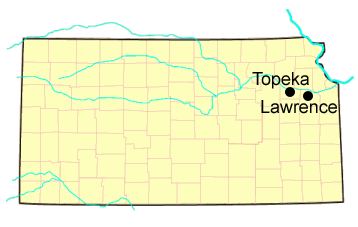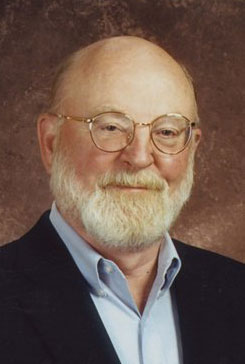|
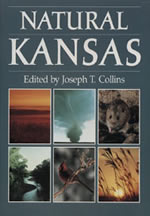
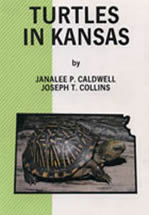
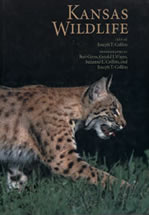
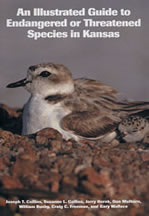
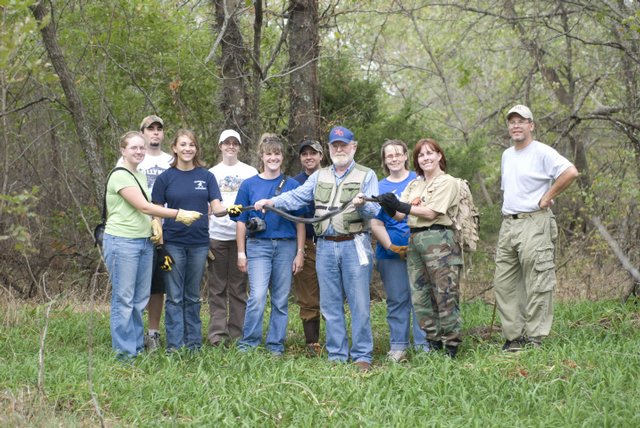
|
| Biography |
|
| |
Joseph T. Collins was born on July 3, 1939, and passed away all too soon on January 14, 2012, doing what he loved most, herping. Joe was an adjunct Herpetologist for the Kansas Biological Survey, adjunct instructor of Herpetology at Washburn University, Herpetologist Emeritus for the Natural History Museum at The University of Kansas, Adjunct Curator of Herpetology for the Sternberg Museum of Natural History at Fort Hays State University, and Director of The Center for North American Herpetology (www.cnah.org). In his lifetime, Joe published more books about Kansas wildlife than any other in the history of the state. He also has over 250 articles on reptiles, turtles, amphibians, and fishes throughout North America. One of his most famous works is the Peterson Field Guide to Reptiles and Amphibians of Eastern and Central North America, Third Edition Expanded that he co-authored and that features photography by his wife, Suzanne Collins. In April 1996, then Kansas governor Bill Graves proclaimed Joe to be the Kansas Wildlife Author Laureate for his contributions to Kansas wildlife writing. There is no doubt that many generations of Kansans will and have picked up one of Joe’s many books when exploring the diverse environments of Kansas.
Return to Top
of Page
|
|
|
Bibliography ( - housed in Thomas Fox Averill Kansas Studies Collection) - housed in Thomas Fox Averill Kansas Studies Collection) |
|
| |
Books:
- Key to the Herpetofauna of the Continental United States and Canada (University Press of Kansas, 2012)
 A Pocket Guide to Kansas Snakes (Friends of Great Plains Nature Center, 2010) A Pocket Guide to Kansas Snakes (Friends of Great Plains Nature Center, 2010)- Amphibians, Reptiles, and Turtles in Kansas (Eagle Mountain Publishing, 2010)
- Standard Common and Current Scientific Names for North American Amphibians, Turtles, Reptiles and Crocodilians (Center for North American Herpetology, 2009)
- A Checklist of the Vertebrate Animals of Kansas (Sternberg Museum of Natural History, 2005)
- Snakes : Ecology and Behavior (The Blackburn Press, 2002)
- Peterson First Guide to Reptiles and Amphibians (Houghton Mifflin Harcourt, 1999)
- A Key to Amphibians and Reptiles of the Continental United States and Canada (University Press of Kansas, 1998)
- Peterson Field Guide to Reptiles and Amphibians of Eastern and Central North America Third Edition Expanded (Houghton Mifflin Harcourt, 1998)
- An Illustrated Guide to Endangered or Threatened Species in Kansas (University Press of Kansas, 1995)
 Kansas Wetlands: A Wildlife Treasury (University Press of Kansas, 1994) Kansas Wetlands: A Wildlife Treasury (University Press of Kansas, 1994)- Captive Management Conservation of Amphibians and Reptiles (Society for the Study of Amphibians & Reptiles, 1994)
- Kansas Wildlife (University Press of Kansas, 1991)
 Natural Kansas (University Press of Kansas, 1985) Natural Kansas (University Press of Kansas, 1985) Turtles in Kansas (AMS Publishing, 1981) Turtles in Kansas (AMS Publishing, 1981)- Amphibians, Turtles, and Reptiles of Cheyenne Bottoms Second Edition (1975)
 Fishes in Kansas Second Edition (University Press of Kansas, 1975) Fishes in Kansas Second Edition (University Press of Kansas, 1975) Amphibians and Reptiles in Kansas Third Edition (University Press of Kansas, 1974) Amphibians and Reptiles in Kansas Third Edition (University Press of Kansas, 1974)
Return to Top
of Page |
|
|
| Writing Samples |
|
| |
---from Kansas Wildlife:
The quantity of wildlife in Kansas wasn’t something new to me. My wife, Suzanne, and I accompanied Larry Miller, a close friend and resident of Caldwell, Kansas, on an expedition to Harper County to find Strecker’s Chorus Frogs. Upon reaching our destination near Anthony, we were stunned when thousands of these little amphibians greeted us with a lusty chorus on a cold, rainy spring night. My first trip to Cheyenne Bottoms during the fall bird migration was enough to convince me that there were plenty of birds in the Sunflower State. Seeing my first big Prairie Dog town in far western Kansas only confirmed my belief that our state had a bountiful supply of mammals, provided the habitat was there for them. […] I became curious about the diverse biota of our state, because Kansas is often maligned as flat, dull, and unexciting by people ignorant of its environment. That curiosity evolved into an itch to try to observe as much Kansas wildlife as possible.
When I visit a Kansas environment damaged by human activities and missing its full and natural complement of plants and animals I am outraged. I feel a sense of despair, a loss of beauty, a loss of variety, a loss of choice, a loss of life. Wildlife is biodiversity. And biodiversity is the essence of a wilderness environment. It is what we seek for our souls after a hard week of work. It is what we must have to restore our sense of balance in a people-dominated world that seems more and more out of balance and at odds with Mother Nature.
Kansas, because of its central location on the continent, is a meeting ground for North American animals, a heartland of wildlife, and our fauna shows this diversity.
---from Natural Kansas:
Kansas has changed so much since presettlement times, and the decisive agent of change is clearly people, past and present. Nature changes the landscapes also, but at nowhere near the speed of human progress. Not only have the diversity and quantity of animals and plants dropped, but land and water have been altered, affecting how the remaining Kansas creatures live. Some things, of course, remain unchanged and natural – a blazing sunset on the western plains or burnished autumn leaves of the eastern forests. Kansas weather still amazes and stuns our sensibilities, with its oft-felt extremes of bitter winter cold and melting summer heat. Kansas rain and snow are fairly clean, and its breezes are clear and rather constant, and the stars – my God, the Kansas heavens are a wonder!
Return to Top
of Page |
|
|
| Awards/Honors |
|
| |
- The Wildlife Author Laureate of Kansas (1996)
- Kansas Wildlife Federation's Conservationist of the Year (1986)
- Kansas Herpetological Society's Bronze Salamander Award (1989)
- Kansas Wildlife Federation Presidential Award (1997)
- Distinguished Life Member of the Kansas Herpetological Society (1998)
Return to Top
of Page |
|
|
| Links |
|
| |
Joseph T. Collins Wikipedia
People at KU (obituary)
Herpetological Conservation and Biology
Redlist ARC
KU Endacott Society Interview
BioOne Obituary
Return to Top
of Page
|
|
| |

